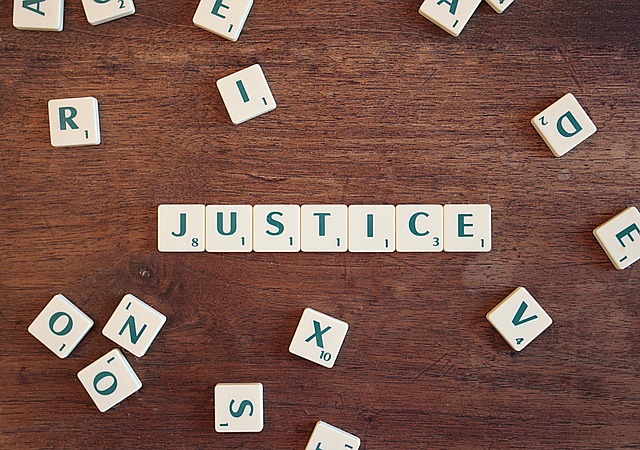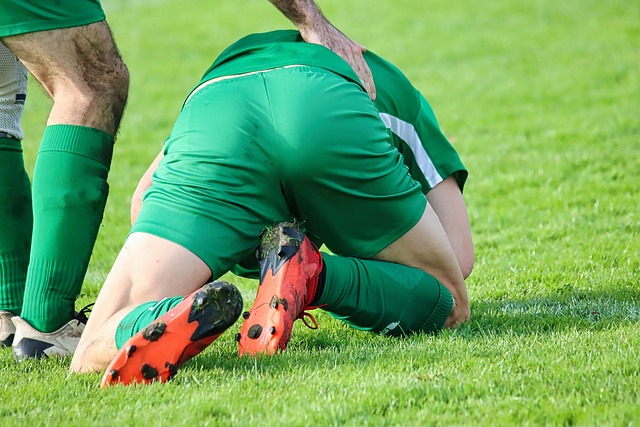Workplace Fall Lawyer: Navigating Permanent Disability Benefits
Workplace fall injuries, causing severe disabilities, disrupt lives and careers. A specialized workp…….
In the ever-evolving landscape of workplace safety and legal practices, the concept of a “Workplace Fall Lawyer” has emerged as a critical focal point for organizations worldwide. This specialized legal practice area focuses on mitigating risks associated with falls in various work environments, ensuring compliance with safety regulations, and representing victims in compensation claims. As fall-related incidents continue to be a significant concern for employers and employees alike, understanding the role of a workplace fall lawyer is more crucial than ever. This comprehensive article aims to delve into the intricacies of this legal niche, exploring its definition, global impact, economic implications, technological advancements, regulatory frameworks, challenges, and future prospects. By examining these aspects, readers will gain valuable insights into how workplace fall lawyers contribute to creating safer work environments and navigating complex legal landscapes.
A “Workplace Fall Lawyer” is a legal professional specializing in representing clients involved in fall incidents within the workplace. This includes, but is not limited to, slips and falls, trips over obstacles, falls from heights, and other similar accidents. These lawyers possess expertise in personal injury law, with a specific focus on occupational safety and health regulations. Their primary role is to ensure that employers adhere to safety standards, protect the rights of injured workers, and seek appropriate legal recourse when necessary.
The concept of workplace fall litigation has evolved over time, shaped by advancements in safety technologies, changes in employment laws, and increasing public awareness of occupational risks. Historically, workplace falls were often dismissed as accidental or unavoidable. However, as the number of serious injuries and fatalities increased, governments worldwide started implementing stringent health and safety regulations. This shift led to a greater emphasis on employer liability and the emergence of specialized legal services to address fall-related issues.
The core components of a workplace fall lawyer’s practice include:
The impact of workplace fall lawyer practices extends far beyond national borders, as international organizations and regulatory bodies have played a significant role in standardizing safety protocols. The Occupational Safety and Health Administration (OSHA) in the United States, for instance, has influenced global standards through its comprehensive guidelines and enforcement. Similarly, the International Labour Organization (ILO) has been instrumental in developing international labor standards, including those related to workplace safety.
The workplace fall lawyer industry operates within a dynamic market, influenced by various economic factors:
| Factor | Impact |
|---|---|
| Economic Growth | Rising GDP often correlates with increased industrial activity, potentially leading to more work-related falls and subsequent legal cases. |
| Employment Trends | Changes in employment rates and industry-specific job growth or declines can affect the volume of workplace fall incidents and legal claims. |
| Legal Costs | Fluctuations in legal fees and the cost of litigation impact both employers’ expenses and injured workers’ compensation. |
| Insurance Premiums | Workers’ compensation insurance rates, influenced by industry-specific risk profiles, can significantly affect businesses’ operational costs. |
Law firms specializing in workplace fall law attract significant investments from clients seeking specialized services. These investments often drive technological advancements within legal practices, such as:
Technological advancements play a pivotal role in both workplace safety prevention and legal strategies:
These technological innovations have far-reaching implications:
Workplace fall lawyer practices are governed by a complex web of policies and regulations, which vary significantly across regions:
Lawyers must stay updated with the latest regulatory changes to provide effective counsel:
Despite their critical role, workplace fall lawyers face several challenges:
To address these challenges, the following strategies can be implemented:
In a major construction project in New York City, a law firm specializing in workplace falls successfully represented several workers who suffered injuries due to inadequate safety measures on a high-rise building site. Through their efforts, the firm secured substantial settlements and brought attention to the importance of fall protection systems, leading to improved safety standards across the industry.
Lessons Learned:
A multinational corporation faced a complex legal battle after a worker fell while on a project in Europe, resulting in severe injuries. A US-based workplace fall lawyer handled the case, successfully navigating cross-border regulations and cultural differences. The firm’s expertise in international law and their ability to communicate effectively with local authorities ensured a favorable outcome for the injured worker.
Key Takeaways:
The future of workplace fall lawyer practices holds several promising opportunities:
To capitalize on these trends, workplace fall lawyers should:
The concept of a workplace fall lawyer has evolved into a vital component of modern occupational safety and legal practices. As the global workforce continues to navigate complex work environments, these specialists play a pivotal role in ensuring employer accountability, protecting employee rights, and promoting safer workplaces. By understanding the intricacies of this field, lawyers can offer effective strategies, while employers can proactively manage risks, ultimately fostering healthier and more productive work cultures.
Q1: What types of fall incidents do workplace fall lawyers handle?
A: Workplace fall lawyers deal with a wide range of incidents, including slips and falls on solid surfaces, trips over obstacles, falls from heights (e.g., ladders or scaffolds), and any other work-related falls resulting in injury.
Q2: How do I know if I have a valid case for a workplace fall lawsuit?
A: A valid case typically involves negligence by the employer, who failed to provide a safe working environment, leading to a fall and subsequent injuries. Factors such as witness statements, medical records, and expert opinions can strengthen your claim.
Q3: Are there any laws specifically targeting workplace falls?
A: Yes, various international and regional regulations address occupational safety, including fall prevention. OSHA in the US and the HSE in the UK are examples of organizations with comprehensive guidelines on workplace safety.
Q4: How can technology improve workplace fall prevention?
A: Technology plays a crucial role through advanced fall detection systems, drone inspections for site assessments, virtual reality training, and smart safety gear that provides real-time data for better risk management.
Q5: Can I represent myself in a workplace fall lawsuit?
A: While self-representation is possible, complex legal cases often require the expertise of a specialized lawyer. Workplace fall lawyers have in-depth knowledge of relevant laws, regulations, and case precedents, which can significantly impact the outcome.

Workplace fall injuries, causing severe disabilities, disrupt lives and careers. A specialized workp…….

Workplace fall lawsuits are legal actions by employees injured due to unsafe environments or employe…….

Injury from a workplace fall demands immediate action. Contacting a workplace fall lawyer as soon as…….

Workplace fall accidents are preventable through proactive measures like regular inspections, safety…….

Workplace fall injuries, often caused by negligence in maintaining safe environments, can result in…….

Workplace fall cases involve complex interactions of federal (OSHA) and state laws aimed at protecti…….

After a workplace fall, prioritize safety, call for emergency help, and transport the injured person…….

Workplace fall lawsuits require specialized legal expertise due to their complex nature and varied l…….

Workplace fall injuries are preventable through regular inspections, employee training, and collabor…….